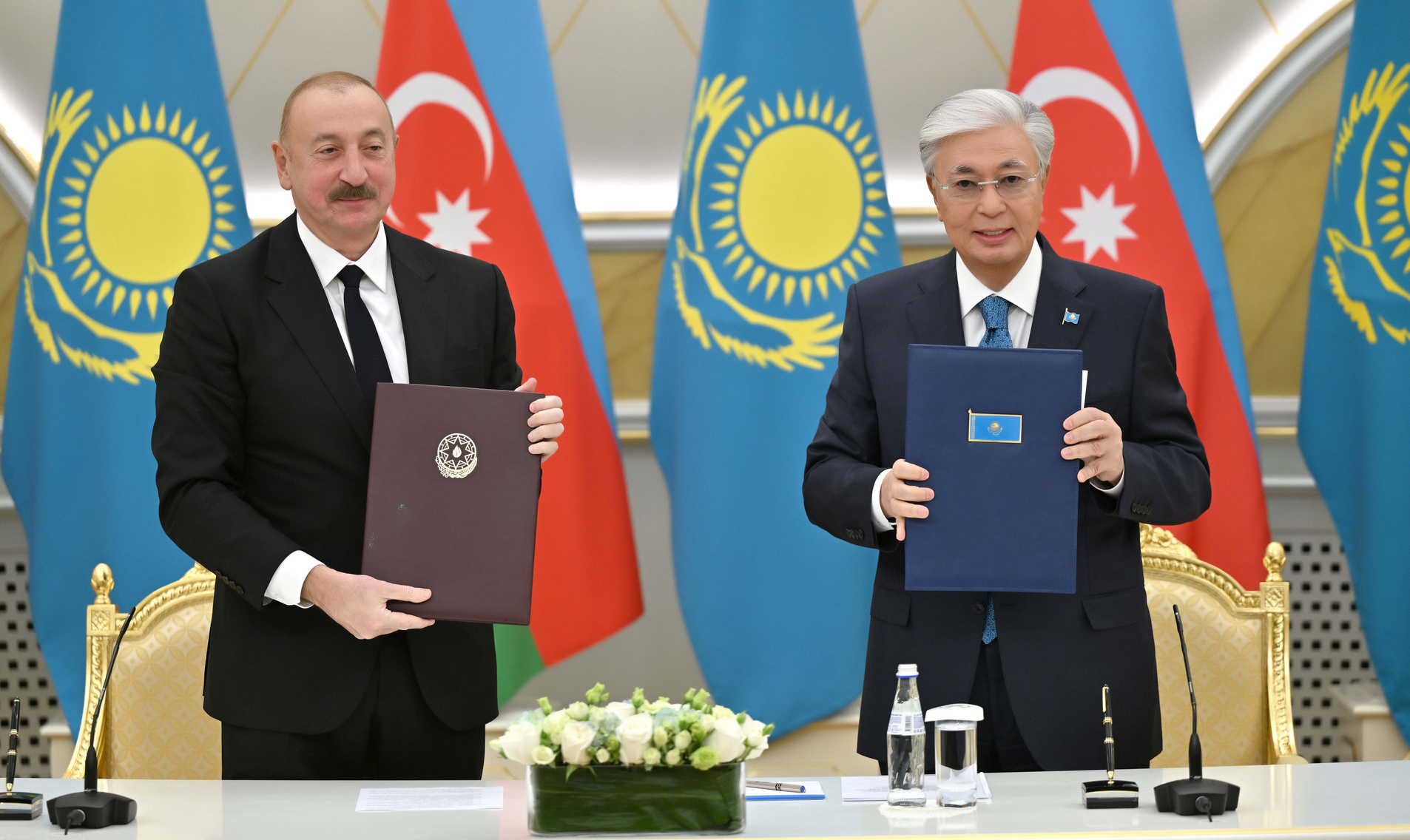Without Russia: The Armenian-Azerbaijani Agenda Takes on a New Dimension

During
his visit to Kazakhstan, President of Azerbaijan Ilham Aliyev unexpectedly
announced the lifting of restrictions on the transit of goods to Armenia
through Azerbaijani territory. The first transit cargo to Armenia via
Azerbaijan was Kazakh grain. Aliyev emphasized that this step is clear evidence
that peace between the two countries has come “not only on paper, but also in
practice”.
In fact, this move marks the beginning of the process of
unblocking communications in the South Caucasus region. The shift from Aliyev’s
traditionally belligerent rhetoric to concrete steps toward peace – followed by
official Yerevan’s expression of gratitude – indicates not only a significant
convergence of positions between the sides, but also the existence of
coordinated plans of a regional nature.
It is noteworthy that this statement was made from
Kazakhstan, and that the cargo being sent to Armenia is of Kazakh origin.
Moreover, the composition of the Azerbaijani delegation and the nature of the
meetings and negotiations held in Astana suggest that transport, logistics, and
economic cooperation are at the core of the visit’s agenda.
Given the current relevance of the “Middle Corridor”
project, Aliyev’s announcement about unblocking transit to Armenia acquires
special significance. Azerbaijan and the Central Asian countries are thus
demonstrating their interest in involving Armenia in the emerging new transport
and logistics system of the region – a step that is extremely important for
establishing lasting peace and cooperation across a wide regional geography.
It
should also be noted that, against this backdrop, both Azerbaijan and Armenia
are undergoing a purge of potentially pro-Russian political elements. Ahead of
the elections in Armenia, Pashinyan is cleansing the country’s political field –
including local governments and the Church – of pro-Russian forces. Aliyev, in
turn, is ridding Azerbaijan of pro-Russian elements represented by the old
Soviet party elite. All of this points to major transformational processes
taking place across the South Caucasus and Central Asia, leaving Russia merely
as an observer of the historic developments unfolding in this geography.
 Latest news
Latest news Latest news
Latest newsUkrainian Drones Set Fire to Russia’s Largest Gas Plant, Gas Intake from Kazakhstan Suspended
20.Oct.2025
Trump and Zelensky in Washington: The Return of “Hardline Support” Policy
19.Oct.2025
Activist Margretta Mirzoyan on the Political Mood in Armenia
18.Oct.2025
Trump and Putin Prepare to Meet Ahead of Zelensky’s White House Visit: A New Phase of Diplomacy or Pressure on Kyiv?
17.Oct.2025
A Shadow over the Russian-Azerbaijani Thaw: What Lies Behind the Arrest of Former Presidential Chief of Staff Ramiz Mehdiyev?
16.Oct.2025
Russia and Syria: A New Chapter in Relations After the Coup
16.Oct.2025
NATO and EU Join Forces to Build a “Drone Wall”
15.Oct.2025
Trump: New bonds of friendship to join Armenia to Azerbaijan
14.Oct.2025
UK to lift its arms embargo on Armenia, Azerbaijan
14.Oct.2025
Russia Opens New Criminal Case Against Opposition Figure Khodorkovsky
14.Oct.2025

 22 Oct 2025
22 Oct 2025








